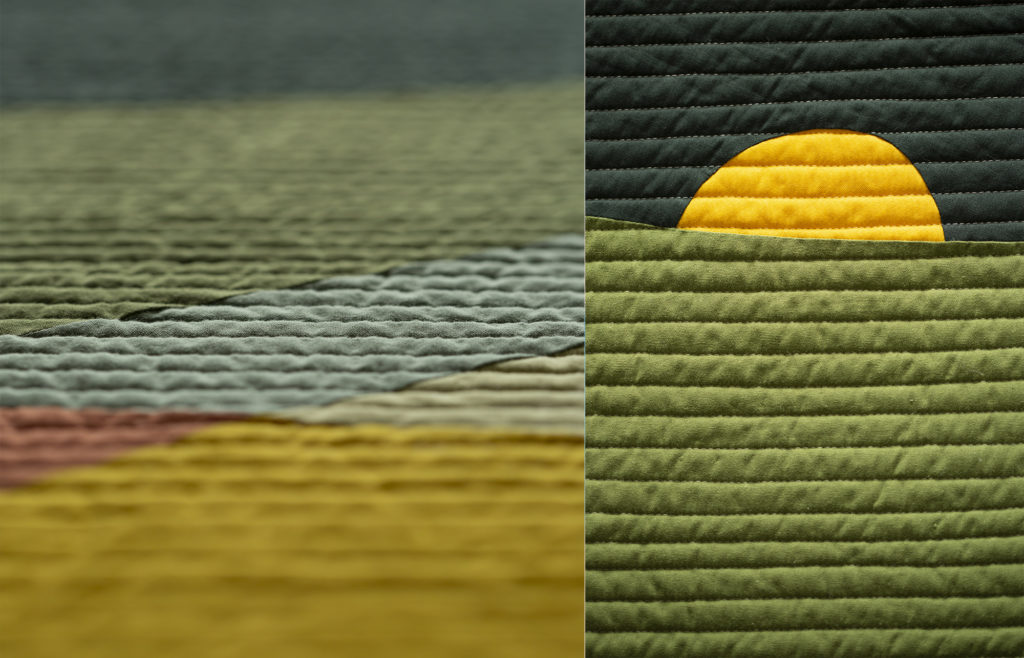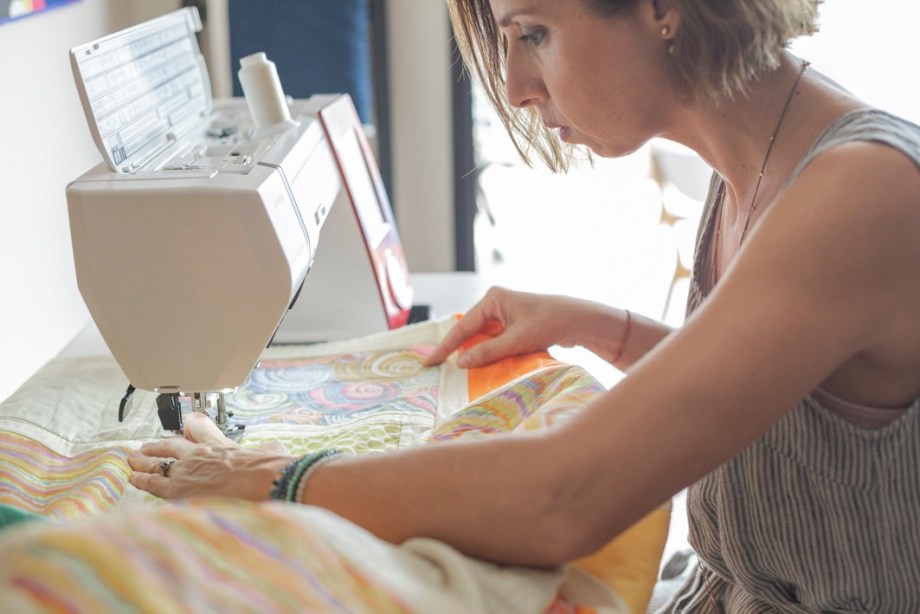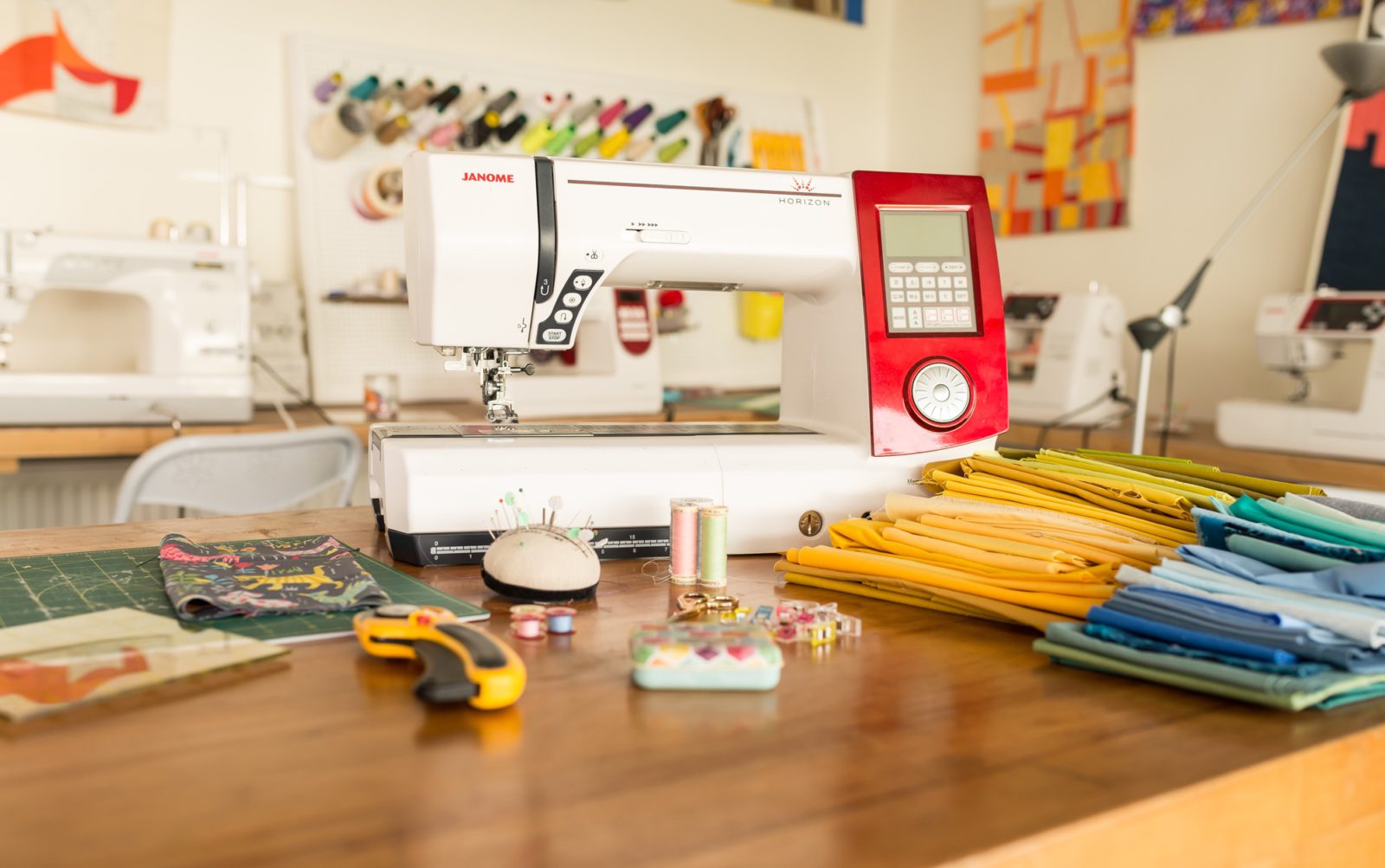Quilting is a fascinating textile art form that humanity has utilized for millennia. Since the dawn of the Industrial Revolution, sewing machines have transformed the capacity for precision in quilting with innovative quilting techniques for all quilters. Whether you are a textile worker for a corporation or a creative fabric hobbyist, machine quilting can be an exciting medium to explore. Let’s take a look at some of the techniques and why you may prefer to use them over hand-quilting methods.
Different Machine Quilting Techniques
Innovative quilting techniques with sewing machines are constantly evolving and offer many creative opportunities for the modern quilter. These are some of our favorites for beginner or more advanced experience levels.

Straight-Line
Straight-line stitching is one of the easiest machine quilting techniques for beginners. As the name suggests, it involves stitching exclusively in straight-lined patterns. That doesn’t mean you can’t get creative with them! Straight-line patterns usually incorporate sharp geometric shapes such as grids, diamonds, or squares. Many ways to add dimension, structure, and individuality to straight-line quilting include methods like
- Channel quilting
- Grid quilting
- Matchstick quilting
- Stitch in the Ditch quilting
Using a walking foot when doing straight-line stitching is highly recommended to ensure the fabric sandwich will move effectively through the needle. A best practice for straight-line stitching is only going in one direction down the quilt. For instance, if you are doing channel quilting, start each stitch line on the same side of the quilt and move it in the same direction. This way, you’ll have tight, even stitching and prevent weird tension waves, leasing to a clean result.

Free-Motion
Free-motion quilting is the way to go if you want to start diving into innovative quiltingtechniques. It involves moving the fabric in any direction to create beautiful patterns and designs on the quilt top. Free-motion stitching is one of the highly-valuable machine quiltingtechniques you can learn in my Improv Quilting courses to master curved or rounded designs.
This technique is best performed on a sewing or quilting machine with the feed dogs lowered or covered. You should also have a free-motion foot for the needle. A super slider cover for the base of the machine can reduce the fabric drag, but it’s not a requirement. Free-motion stitching can be challenging at first, but it grants you tremendous creative freedom for quilt patterns.
Piecing
Although piecing techniques in quilting can be done by hand, they’re easier to accomplish quickly with help from a sewing machine. There are also many kinds of modern or traditional quilt piecing techniques, including
- Foundational Paper
- Curved
- Appliqué
- English Paper
When it comes to innovative quilting techniques, piecing is almost essential for stunning improvisational designs. It’s also beneficial for reducing fabric waste and exploring the limitless combinations of color, texture, and designs for the modern quilter. Keep an open mind during the process, and don’t be afraid to cut up various pieces of fabric. The boundaries of quiltingwith piecing techniques can only be defined by your imagination!
Benefits of Doing Machine Quilting
Hand quilting is a traditional art form that certainly has its place and deserves our respect. In fact, it is very common and sometimes recommended to incorporate hand quilting into machine-made quilts. However, there are many benefits to using a machine in your quilting.
The most obvious benefit is that machine quilting will always be much faster than hand quilting, especially when creating intricate designs. It also allows you to create larger pieces with less effort than doing them by hand.
Machine quilting also makes it easier to use more difficult fabrics, such as batik or silk, or thicker fabrics that you may avoid if you were solely hand quilting. Using a machine when quilting with more troublesome fabrics can help you make fewer mistakes and will give your finished product a more uniform look.

Although all quilting forms take practice to see improvement, machines can flatten the learning curve of exploring innovative quilting techniques and help you quickly improve your precision in quilting. When you quilt with a machine, you can learn how to achieve more consistent results more quickly than you would by hand. Machines also make this excellent form of creative expression accessible to those who may have more trouble with the delicate hand movements needed for quilting by hand.
Other things to consider when deciding whether to hand or machine quilt are the quilt’s primary purpose and your desired finished look. Are you creating this quilt for everyday use, and will it be washed in a machine? Will this quilt be a display piece, and do you want the stitching to be as uniform as possible? Are you making the quilt for a customer, and do you want the patterns to be precise and the stitching to be durable? Choosing machine quiltingover hand quilting is a good option in any of these situations.
Machine Quilting Can Expand the Modern Quilting World
Traditional hand quilting is an art form and should always be preserved. Handmade quilts for art and practical use were part of the beginning of humanity’s exploration of ingenuity and creativity thousands of years ago. Now, quilting and sewing machines help us continue to push the limits of what our minds can create, especially in one of my many on-demand or live quilting courses.
Whether you have a vintage Singer or you are using the latest fancy longarm quilting machineon the market, innovative quilting techniques are boundless when using a machine.




